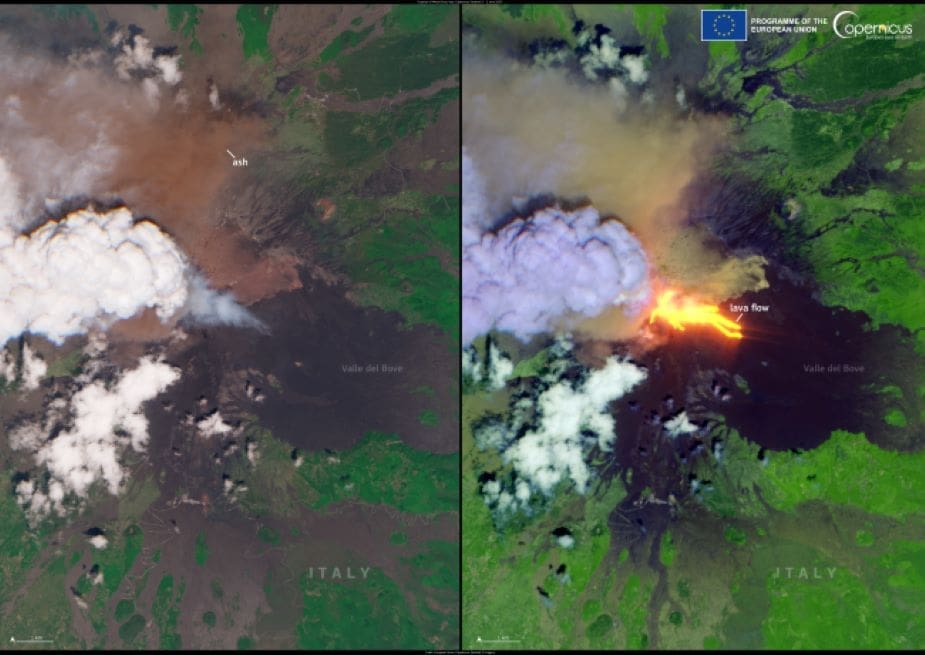Mount Etna erupted on 2 June 2025, sending a towering ash column into the sky and generating lava flows and pyroclastic activity from its South East Crater. The eruption occurred at 11:24 AM local time and was accompanied by Strombolian explosions and a short-lived pyroclastic flow, according to Italy’s National Institute of Geophysics and Volcanology (INGV).
A Copernicus Sentinel-2C image captured the scene at 09:40 UTC, just minutes after the eruption began. The natural colour view on the left shows a dense plume of volcanic ash rising from the summit and trailing westward over inland Sicily, partially hidden by a rapidly forming pyrocumulus cloud.

The right panel, a false colour composite using shortwave infrared channels, highlights the intense heat of lava streams flowing down the slopes into the Valle del Bove, a depression on the eastern flank of the volcano.
Etna, Europe’s most active volcano, regularly disrupts air traffic and coats surrounding villages with ash. Remote sensing data from the Copernicus programme plays a vital role in detecting such eruptions in near-real time, guiding hazard assessment and emergency management while contributing to long-term monitoring of volcanic terrains.
Featured image credit: European Union, Copernicus Sentinel-2 imagery



